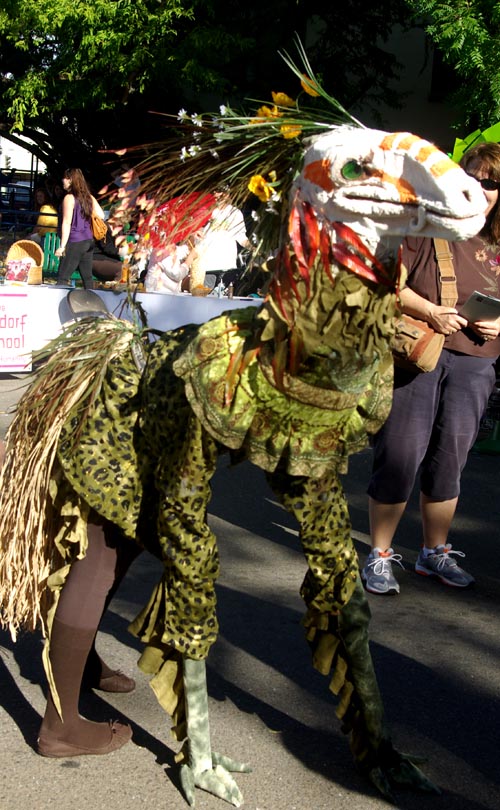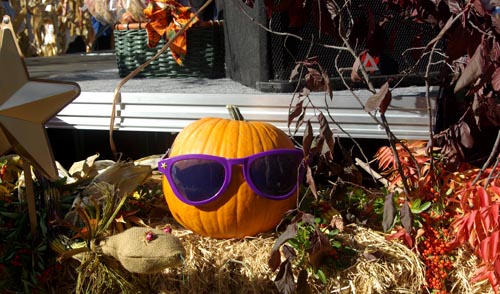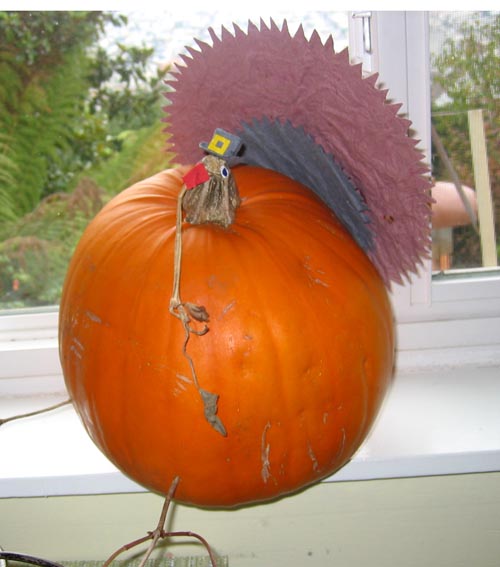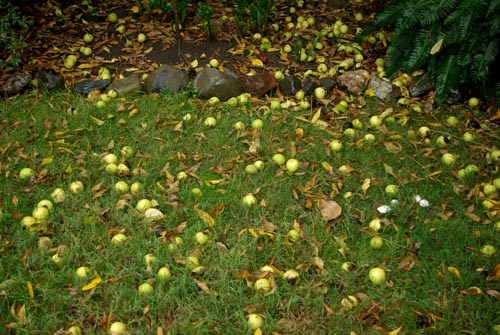
Increasingly over time I have been moving towards trying to become more aware and, if possible, to integrate into my every day experience what culinary resources I naturally find at hand. Toward that end, this year I discovered huckleberries and added them to my scone repertoire. I began to teach myself what plants the Native American peoples used locally and to think about what use they might have for me in this day. I began collecting recipes for the quinces that I found growing on this property. I gathered dozens and dozens of apples from my dear friend Conny’s land, and shared my apple creations with you here. But then there were the walnuts.
The first season I saw those round green balls in the side yard I honestly didn’t have a clue what they were. I was sure they were ornamental. This thought was reinforced by the fact I have an English walnut tree in back about which there is no doubt what they are. The multitude of squirrels that traverse its branches keep me in the know. And had I not been watching them above, the shells they leave upon my picnic table and wicker patio furniture underscore and flaunt their continued (annoying) presence. The second year I was here, though, a woman with whom I am acquainted stopped to inquire if she might have some of the green round balls “for her squirrels.” I gave her not one but two bags of what by then I had learned to identify as black walnuts. I’d received a rather cursory education from my neighbors who obviously thought the black walnuts were inferior to the English walnuts which grow throughout the neighborhood, and, in addition, not worth the bother, and so I found myself simply discarding them, noticing how messy they seemed once their green hulls were punctured.
Meanwhile, however, I’ve been growing, as have we all. There is a quickening thought form among us that in order to restore the imbalance we have unconsciously wrought upon our planet we can “eat locally,” “grow our own food” and thus “reduce our carbon footprint.” All worthy tasks. So the thought that increasing my production of food from the garden, re-learning to can foods and to continue my practice of dehydrating foods was already on my radar. The way I held these activities was in the knowing that we needed to begin to reclaim our agricultural skills, as in pre-industrial, as in, before we got into this big energy mess. But more recently, most likely in my exploration of “native plants” I found myself thinking more about pre-agricultural practices, meaning the Hunter Gatherer. What would it mean to reclaim my own inner hunter-gatherer? And thus the spiraling towards collecting, harvesting and utilizing as described above. And this meant, inevitably, that I would look anew, and, at last, at the black walnuts and to go down the Black Walnut Road. Which is precisely what I did.
I engaged a dubious Antonia in this endeavor, cajoling her out into the rain one morning to “collect walnuts.” “Oh, Mom! It’s raining.” “Not that hard. Come on.” Out we went in our raingear and in short order we had literally collected over 1,000 walnuts. No kidding.
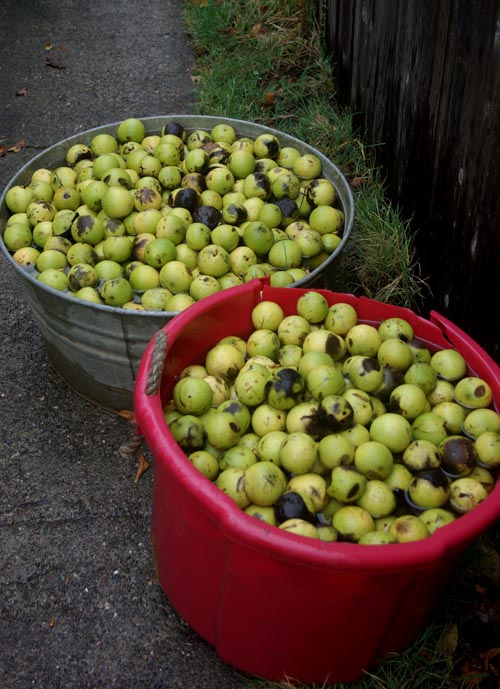
Impressive, right? I had done a bit of research prior online and was relieved to find a university giving me some guidelines, that included what to do about husk flies. For sure enough, I’d spotted some little white creatures in the husks themselves and was very glad to learn they did no harm to the nutmeat. Just wanted a place to transform into a fly. What helped me most was to find a photo of a husk fly,
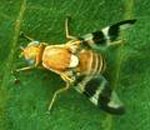
who turned out to be quite cute, and having just spent a lot of time thinking and writing about butterflies, who, I reminded myself were once caterpillars, I came to peace with the husk flies in their wiggley form and opted for the advice to simply fill up the tubs with water. Goodbye wiggleys.
After a day in the rain, soaking, I knew it was important to get the husks off and to get the nuts drying. Much as I dreaded this process, I dawned surgical gloves and stripped, by hand, the husks off about 125 walnuts.

But I was wiped out. Seriously. I surveyed my collection and the enormity of the project hit me. What had I been thinking? And did I mention I’d gone through three pairs of surgical gloves, each of which had punctured and my thumb was absolutely black? And it hurt. Ouch. OK, slightly disenchanted but still willing.
In the course of the next few days I continued research online and talked to neighbors.
The flavor of black walnut lends a gourmet touch to cookies, breads, cakes and other baked goods. The nutmeats are often expensive and difficult to locate; discovering an available crop of black walnuts is a real find. ~University of Minnesota Ext. Home Page
Well, then!
The man across the street grinned and told me, enjoying every minute, “We used to sell those things as kids. We got about two dollars for a gunny sack. Pigs eat ’em.” Well, thanks.
Antonia lessened the angst of the two tubs still about 3/4 full of nuts by posting an announcement online and within a day a man showed up who took the rest away, planning, he said, to “dump them on a dirt road until they dry out and then probably run a truck over them.”
Do you see, dear readers, what I was going through?
Another person responded to Antonia’s post and informed me there was a large walnut tree in town that was not English, that shelled itself! What? Where? I drove to the location and to my utter astonishment found an English walnut tree which had been grafted to a black walnut tree, and was thus sporting not only leaves of both trees–highly distinct!–but also dropping walnuts of both varieties on the street, thus confusing passersby, such as the caller.

In spite of all the learning, which I appreciated, I remained perplexed with the amount of material still on the nuts and could not begin to fathom scraping it off-though I tried. I finally took heart when a neighbor who had gone down this road once herself reassured me I could dry them in the oven and the rest of the husk would be easy to strip off. So here’s what I did. First I brought them in the house and placed them on oilcloth to begin to dry.
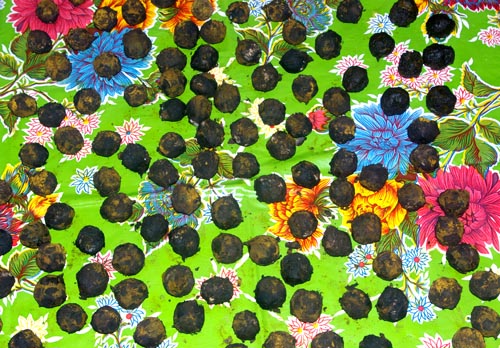
Some of them are still there drying. Then I put about half of them on a big metal pan and put those in my oven at lowest temperature possible, with the door ajar. I left them in there for about two hours.
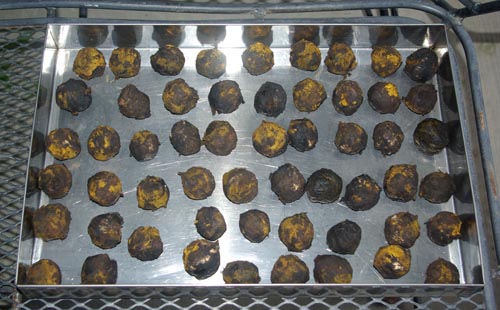
By now I was pretty much fully aware of how much work it is to harvest black walnuts and more importantly, what kind of patience the people who actually relied fully on such treasures had to have to take advantage of them. And if you have ever purchased them you might begin to understand why they are so expensive!
This afternoon I decided to see just how much work was still in front of me. I plan to let these walnuts continue to dry, either in a sunny place, or a dry place indoors or perhaps I will revert to the oven procedure again. It’s a big experiment. But looming over the known part ahead lay the unknown part: just how hard are they to crack? Everything I’d read said, “Really hard.” I knew you had to do it on cement or metal. A wooden surface is not enough. And I knew you had to use a hammer or vise. (I heard over and over that locals, indeed, drive over them with their cars!) I took a couple outside on the sidewalk and hit them with a hammer. Not that bad! The nuts inside are not yet cured–they need at least three weeks to air out even after they are removed from the shell! But I nibbled one, and a little grin emerged on my face. Yes, I think they will be worth it!
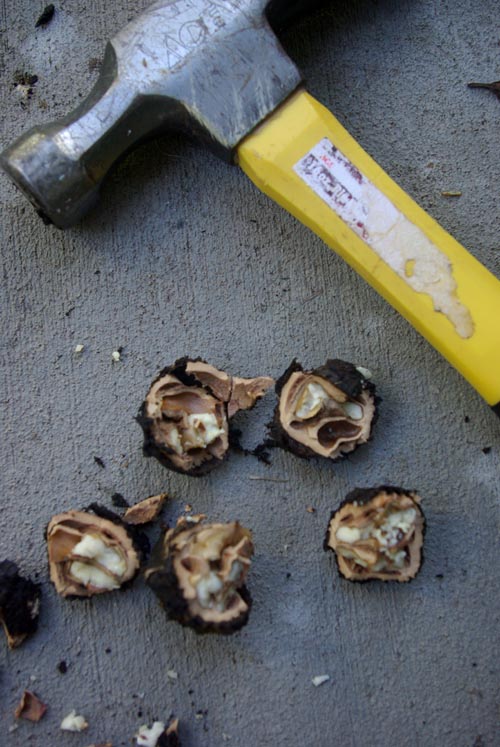
I am now imagining that I will buy an ice cream maker and make some delicious black walnut ice cream. Or maybe a black walnut cake for Christmas. It will all be worth it. Not an ounce will be taken for granted, and I will glow with the knowing I took the journey and came out on the other end. Lucky family. Lucky me.
Love and gatherer blessings,
Kathryn xoox
Posted on October 25th, 2009 by Kathryn
Filed under: Plants | 28 Comments »
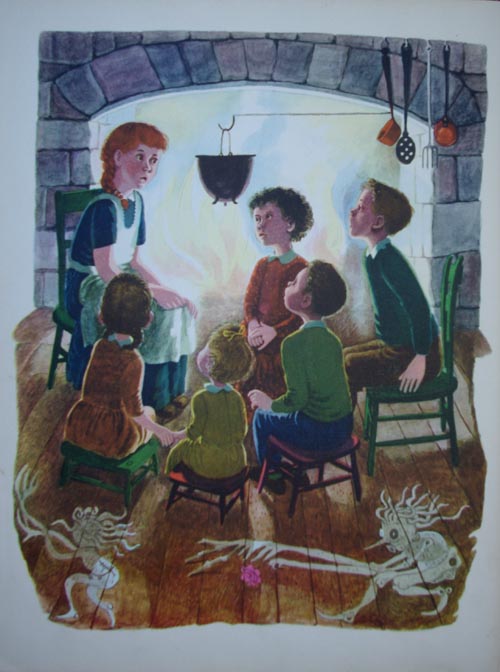









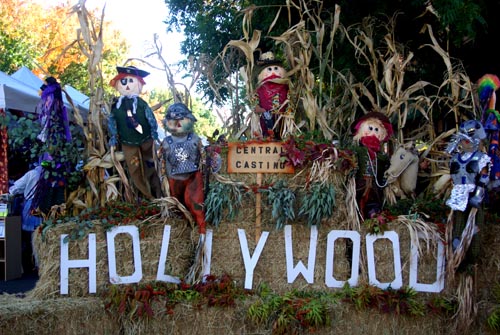



 Butterfly doggie
Butterfly doggie